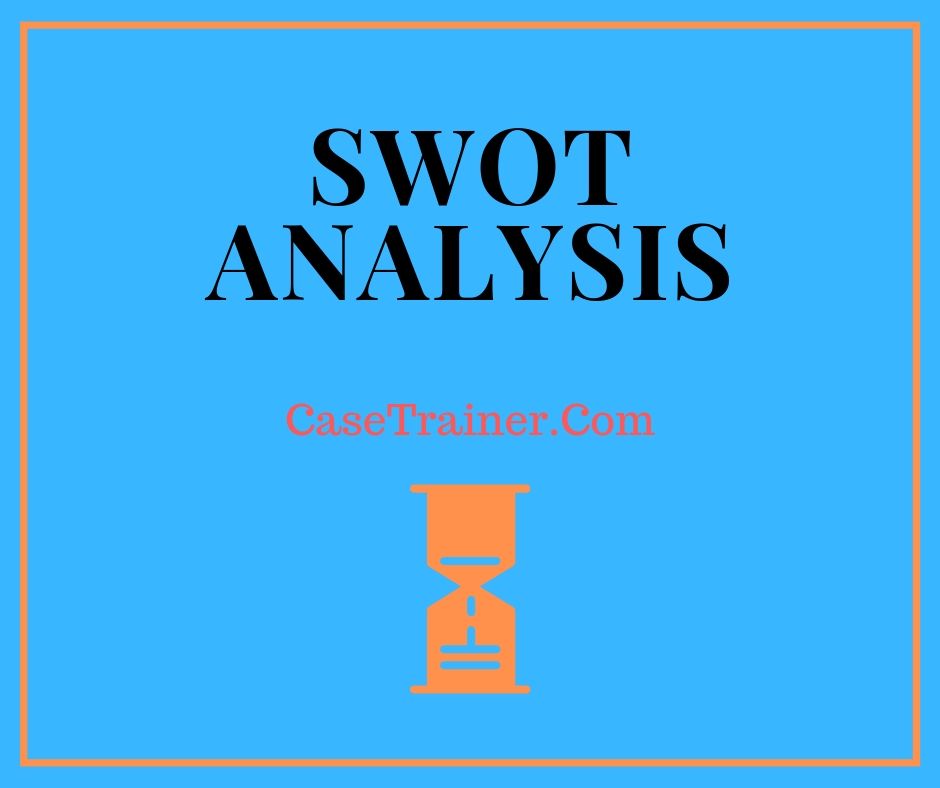Sherritt Goes To Cuba B Dealing With Political Risk Under Raul Castro Case Study Solution and Analysis
Intro
Sherritt Goes To Cuba B Dealing With Political Risk Under Raul Castro Case Study Analysis is the largest publishing company with a greatest market share in the China's book retail market. CMP supplies a number of services consisting of; gathering information, processing info and communication services. Major business sectors of the company consist of; books, regulars, consultancy and circulation. The company has a vast product portfolio and its major products include books, regulars, online media, exhibits, research study reports etc. Sherritt Goes To Cuba B Dealing With Political Risk Under Raul Castro Case Study Solution has become a specialized information service provider and a large extensive Science and Technology publishing business through the integration of print media, audio-visual media and the network media.
Important Problems
CMP has invested its 60 years journey smoothly, being a successful publishing house, nevertheless, the altering macro market trends and forces bring specific challenges to the publishing market in general and Sherritt Goes To Cuba B Dealing With Political Risk Under Raul Castro Case Study Help in specific. These elements include;
• Entrance of the brand-new publishing firms in the industry.
• Decreasing growth of the publishing market.
• Market saturation.
• Intro of digital publishing methods
• Enhancement of science and technology.

The transformation of the macro markets have raised numerous concerns to the management at CPM that what could be the future of CMP in this circumstance? Do the long important experience, technical resources and the capabilities of the company could be utilized to pursue the future advancement unceasingly? How could the company sustain its long term competitive position in future?
Situational Analysis
Internal Analysis
SWOT Analysis
Strengths
Sherritt Goes To Cuba B Dealing With Political Risk Under Raul Castro Case Study Analysis has specific strengths that can be utilized to minimize the dangers, conquer the weakness and obtain the chances. Strengths of CMP are offered as follows;
• The long term experience of Sherritt Goes To Cuba B Dealing With Political Risk Under Raul Castro Case Study Help in the publishing industry i.e. 60 years permits the company to offer high quality items at a lower expense utilizing its prior experiences.
• The technical resources and abilities created by its successful journey offer a competitive benefit to CMP.
• Large product portfolioof CMP helps it to diversify its threat and supply high worth to its clients.
• Strong financial position allows the business to think about several advancement opportunities without any worry of raising fund externally.
Weaknesses
Along with the strengths, the company has specific weaknesses which might increase constraints for the business in implementing its development program. The weak points of Sherritt Goes To Cuba B Dealing With Political Risk Under Raul Castro Case Study Help are offered as follows;
• Despite of being a science and technology publishing company, the business still has standard ways ofpublishing which are not compatible with the growing technological shift.
• CMP highly relies over the Chinese markets for its growth. It ought to propose certain expansion plans to avoid its dependence over the Chinese markets to accomplish long term development.

Opportunities
The development of the publishing market is declining given that 2008, impacting Sherritt Goes To Cuba B Dealing With Political Risk Under Raul Castro Case Study Analysis as well, however the growth might be restored by availing certain chances provided in the market. The market opportunities for CMP include;
• The company could likewise introduce Digital Publishing by using its long term technical experience and a strong client acknowledgment in the market.
• CMP could consider a development program through the growth towards foreign markets in order to lower its dependence over Chinese markets by using its vast funds.
Dangers
The changing macro patterns in the market and increasing competition in the publishing market has actually posed particular dangers to Sherritt Goes To Cuba B Dealing With Political Risk Under Raul Castro Case Study Solution including;( Gurel, 2017).
• Introduction of digital publishing i.e. digital libraries could lead to declining market share of Sherritt Goes To Cuba B Dealing With Political Risk Under Raul Castro Case Study Analysis due to the customer shift towards virtual libraries.
• The existence of large number of competitors in the publishing market increase the risk for CMP to lose its competitive position in the market, as rivals can acquire a strong consumer base by utilizing specific techniques like aggressive promotion, quality items, and so on
• Entryway of brand-new publishing firms in the industry in addition to presence of high competition increases the risk of losing the client base.
Monetary Analysis.

Due to lack of information, the financial ratios of CMP might not be calculated. It might be analyzed from the Appendix III that the yearly overall profits of Sherritt Goes To Cuba B Dealing With Political Risk Under Raul Castro Case Study Solution during the period 2000-2012 are growing at a high development rate, revealing that the yearly demand of the items of CMP is growing and the business is quite effective in attracting a large number of customers at a potential cost.
Along with it, the 2nd graph which reveals the annual growth in the Sherritt Goes To Cuba B Dealing With Political Risk Under Raul Castro Case Study Solution total possessions, shows that the company is rather effective in including value to its properties through its incomes. The development in properties shows that the overall value of the firm is likewise increasing with increasing the total profits. (Unidentified, 2013).
Another financial analysis of the business using the offered information might be the analysis regarding the circulation of total incomes of the business. Major part of the profits of CMP originates from the sales of its published books i.e. 64% as displayed in the Case Appendix V. The business might move towards other business sections with a prospective development to attain its future development objective.
PESTEL Analysis
PESTEL analysis might be performed to learn the various external forces impacting the performance of the business and the recent patterns in the external environment of the business. A quick PESTEL analysis of the business is provided as follows; (Alanzi, 2018).
Political.
As the publishing sector might have a significant impact on the state of mind of individuals about the communist ideology of the government, therefore, the publishing sector is extremely monitored and directed by the Promotion Department of the Communist Party of China. For that reason, it might be said that the general political forces impacting Sherritt Goes To Cuba B Dealing With Political Risk Under Raul Castro Case Study Solution business are high. The federal government policies relating to the publishing sector are also increasing with the passage of time.
Cost-effective.
Financial forces impacting the publishing sector in general and the CMP in particular includesthe rates of paper, the income level of consumers, the inflation rate, and the overall GDP growth of the country. All these forces integrate effect the need for the publishing market.
Social and Demographical.
The consumer choices are moving towards digital publishing rather than the conventional was of publishing. In this regard, CMP needs to focus on digital publishing to meet the changing consumer choices.
Technological.
Technological forces affecting the CMP include the technological advancement in the reading strategies and so on. Improvement of science and innovation together with the increase of digital publishing might decrease the need for the CMP products, if particular actions would not be taken soon.
Environmental.

Ecological forces affecting Sherritt Goes To Cuba B Dealing With Political Risk Under Raul Castro Case Study Help consists of the concerns of environmental communities over the usage of paper in publishing books. The paper utilized in the books while publishing is needed to be disposable and the ink used while publishing must not be hazardous for the environment.
Legal.
Legal guidelines for the publishing sector at whole are high. Publishing Regulation 1997 needs the publishers to be authorized initially by the Government to be gone into in the publishing market.
Market Analysis (Porter's 5 Forces Model).
Porter's Five Forces Model might be utilized to evaluate the beauty of the publishing market China. A brief analysis of the Porter's 5 Forces is given as follows;.
Danger of New Entrants.
Dangers of new entrants in the Chinese Publishing Market is moderate. The potential growth in the industry tends to attract new entrants to the publishing industry. Nevertheless, the presence of intense competition and the requirement of huge capital tends to demotivate brand-new entrants to enter in the market.
Risk of Replacement.
Risk of Replacement is high for the Chinese Publishing Market. The replacement items for the published documents is the files provided in the virtual libraries on particular sites. The changing customer choices towards digital learning increase the risk of substitution for the market.
Competitive Rivalry.
Competitive competition in the publishing market is high. The presence of large number of customers in the Chinese Publishing Industry like CIP, PTP etc. tends to produce high competitive rivalry for CMP. In addition to it, new entrants are likewise participating in the market increasing the competition for CMP.
Bargaining Power of Provider.
The significant providers of the Sherritt Goes To Cuba B Dealing With Political Risk Under Raul Castro Case Study Analysis consist of the suppliers of the paper for releasing files. As CMP is the biggest publisher in the Chinese Publishing Market, for that reason the general bargaining power of supplier for CMP is low.
Bargaining Power of Purchaser.
Haggling power of purchaser in the publishing market is high. Due to the presence of a large number of publishers in the Chinese market and the market saturation, the purchasers needs high quality files at competitive prices.
Competitors Analysis.
CMP operates in an extremely competitive market with the presence of a great deal of competitors. However, the business has a competitive position in the market with the greatest market share in the Chinese publishing market. Major competitors of Sherritt Goes To Cuba B Dealing With Political Risk Under Raul Castro Case Study Solution consist of;.
• Chemical Market Press (CIP).
• Posts and telecommunication Press (PTP).
Chemical Market Press (CIP).
CIPis among the close rivals of CMP. Established in the exact same duration, CIP publishes comparable type of books. For a large period, CIP held the biggest market share, and still ranks 2nd and 3rd in various market sectors, with a significant concentrate on educational publications. CIP functions as a risk for CMP as it might wean its market share due to its long term competitive background. CIP is focused on digital publishing and might wean the marketplace share of Sherritt Goes To Cuba B Dealing With Political Risk Under Raul Castro Case Study Analysis easily in the existing market situation.
Posts and telecommunication Press (PTP).
Another close competitor of CMP is PTP. It was also founded in the very same period as CMP and CIP. It ranks sixth in the state-owned publishers in regards to organisation scale. It is also one of the prominent gamers in the publishing market with an annual overall earnings of RMB 550 million in 2010.
Alternatives
Alternative-1: Expand towards New Markets
Pros
• Reducing reliance over the Chinese markets.
• Increasing variety of Clients
• Growth chances.
• Preventing the effect of market saturation in the Chinese publishing industry.
Cons

• Usage of possible resources in expansion.
• Risk of failure in brand-new markets.
• Time consuming.
Alernative-2: Introduce Digital Publishing
Pros
• Sustaining customer base.
• Approaching brand-new markets.
• Easy to present using existing abilities.
• Low danger of Failure.
• Low requirement for funds.
• Increased item portfolio supplies high worth to customers.
Cons
• Competitors in the market by CIP, who has prior focus on the digital publishing.
• Shift of focus from the core company segments to the new one can lead the company to lose need of its items in the market.
Recommendations
As the preferences are moving towards digital publishing and the business require an immediate service to avoid the decreasing market development. The company might also think about the growth program after the success of its digital publishing program.
Execution
In order to introduce digital publishing in its item portfolio, the company needs to first gathers the data related to the customer need, the possible markets, the government regulations and the data related to the rivals provided in the market. If the preliminary offering proves a success, the company ought to go for the other markets. In this method the company would be able to execute its digital publishing program.
Conclusion
Although, the development of the publishing industry is declining given that 2008, revealing a risk to the company's long term presence, but the situation can be managed by thinking about an advancement plan in the future. The company might consider presenting digital publishingin its existing market to execute its development program at instant basis and to avoid the threat of failure for entryway in the new markets.

